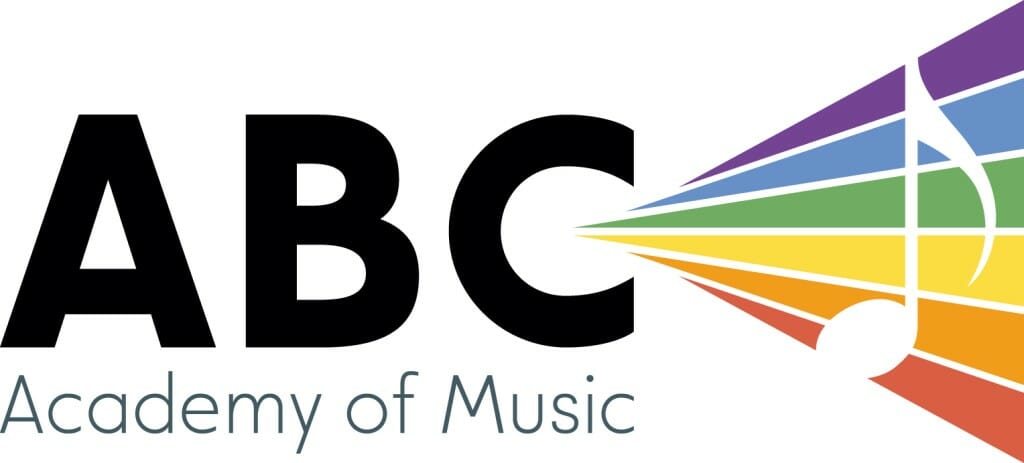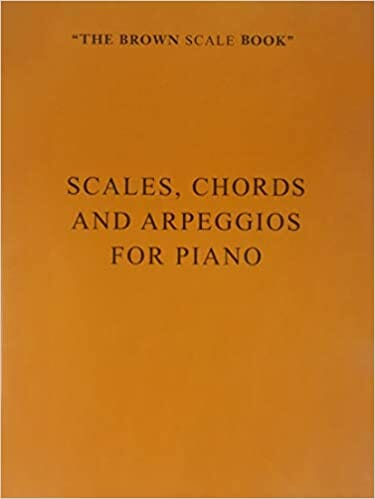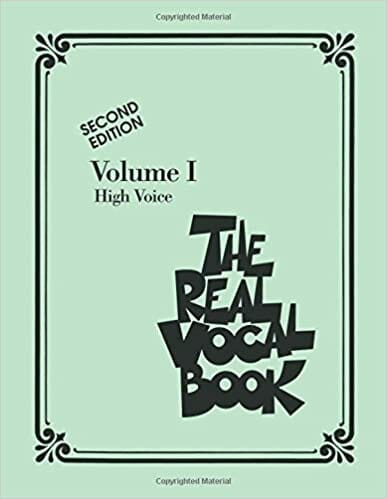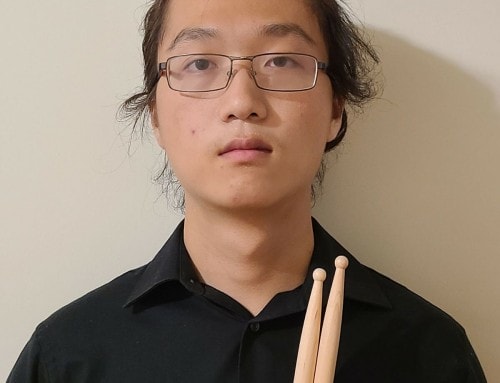B.Mus (Humber) in-progress
Adina is a singer-songwriter based in Toronto completing her Bachelor of Music degree at Humber College in vocal performance. Trained classically in piano since the age of 5, she has branched out into pop and jazz as well.
Vocally she is well-versed in many genres including jazz (she loves to scat!), musical theatre, pop, singer-songwriter, country, R&B, and acappella. She has 7 years of choir experience in both chamber and jazz styles. Adina has been writing and singing original songs since the age of 12, and has two singles as well as an EP out on all platforms under the artist name Adina V.
She has performed all across southern Ontario singing with the Toronto All-Star Big Band, as well as at various venues in the GTA with her own jazz duos and trios. As a member of the Cawthra Park Chamber Choir she performed at Roy Thompson Hall with the TSO for two years in a row. At Humber College she is part of the Vocal Jazz Ensemble led by Lisa Martinelli; this group performs advanced repertoire at events like the Ontario Vocal Jazz Festival.
Adina has been teaching music for the past 7 years and loves helping students meet their personal goals while fostering a love of music that lasts forever!
Get to know Adina…Beyond the Bio!
Hobbies: reading, puzzles, video games, painting
Musical Influences: Ella Fitzgerald, Nancy Wilson, Doris Day, Joni Mitchell, Taylor Swift, John Mayer
Favourite Food: Pad Thai
Least favourite food: eggplant
Favourite music: Indie rock and folk
Favourite song: All I Need by Jacob Collier ft. Mahalia & Ty Dolla $ign
Favourite movie: Matilda
Favourite movie music: The Pirates of the Caribbean theme
Favourite Musical: Dear Evan Hansen or The Last Five Years
Best Quote from your teacher: “It’s an amazing and wonderful experience to be able to be intentional about, in the moment, making music”
Favourite Quote: “Even as we are, we are becoming”
Favourite Book: The Girl With the Dragon Tattoo trilogy – Stieg Larsson
Best thing about teaching at ABC: Sharing and fostering a love of music with students of all ages
Latest Homework from Adina
Is Adina Your Teacher?
Sign up now to get your weekly assignments delivered, and never lose your homework sheet again!
Sunday, March 14, 2021
Sahil
Recommended minutes to practice: 15 minutes a day
What to practice: C position piano warmup (piano and vocal), Old MacDonald, Twinkle Twinkle (piano and vocal), Night Begins to Shine
How to practice it most effectively: For the C position warmup, go one hand at a time, up and down the 5 finger scale, doing your best to connect between the notes. Keeping your fingers bent and really focusing on holding one note down until the next plays will help with this. When doing this warmup for your voice, play just piano first to hear it, then sing with your playing on the syllable “mah” or “moo”. Move from C position up through D, E, etc. so you can warm up your higher notes too. When singing higher, don’t push the sound out, rather let your tone become softer and gentler. Old MacDonald has LH in D position and RH in C position. The order of notes is: C-C-C-G-A-A-G-E-E-D-D-C, with RH doing E, D, and C, and LH doing G and A. Twinkle Twinkle has LH in F position and RH in D position. The notes are: C-C-G-G-A-A-G; F-F-E-E-D-D-C; G-G-F-F-E-E-D (x2); C-C-G-G-A-A-G; F-F-E-E-D-D-C. When the piano feels comfortable try singing along! Make sure you’re matching the same notes the piano plays with your voice.
For Night Begins to Shine, please use this Youtube link: https://www.youtube.com/watch?v=5I0G5rab_xQ Only go until 1:08, this is the first verse and chorus.
The Piano Adventures Primer Lesson Book can be found here: https://www.amazon.ca/Primer-Level-Lesson-Piano-Adventures/dp/1616770759/ref=sr_1_1?dchild=1&keywords=piano+adventures+primer+lesson&qid=1615747345&sr=8-1
Nathalia
Recommended minutes to practice: 15-20 minutes a day
What to practice: A major scale (hands separately 1st week, hands together 2nd week), Bye, Bye Love, Runaround Sue
How to practice it most effectively: In our A major scale, the fingering stays the same as other scales, the one difference is we are adding a G# to our F# and C#. In Bye, Bye Love, please also put that last second ending hands together. Notice how RH is mainly going back and forth between two different sixths. Just look at which note is on top (F or G) and move accordingly. For LH, use your bass clef sayings to help you find the notes. Spend a little more time on the chorus so it can feel just as flowing and comfortable as the verse. Please use written finger numbers since they are the easiest/best way to play what’s written. For Runaround Sue, please play RH up until bar 16, continuing to do the swing rhythm for eighth notes. Note how RH plays many intervals, and when it switches from one to the next there is typically one note that stays and one note that moves. Of course, always double check with your Every Good Boy Deserves Fudge and FACE sayings!
Tuesday, March 23rd, 2021
Anaya
Recommended minutes to practice: 10-15 minutes a day
What to practice: C and G position warmup (hands together), What Can I Share (in C and G positions), and Wishing Well. Please also complete as much as you can of the worksheet on page 35!
How to practice it most effectively: For your warmup, play using both hands from the bottom notes to the top notes then back down. Do your best to connect and make all notes even lengths. In What Can I Share, remember that LH starts first – say the letter names as you play to help you. When transposing to G position, the finger numbers you play with stay the same, so use these to guide you. For Wishing Well, remember that the melody is entirely moving step-wise, so you just have to watch the direction notes are moving in. Note the 1-2, 1 rhythm with the half notes followed by quarter notes.
Saskia
Recommended minutes to practice: 10 minutes a day
What to practice: Siren warm-up, Doe a Deer, and Dynamite (by BTS)
How to practice it most effectively: As a quick vocal warmup before you start singing, try doing a few sirens. These are where we start at the bottom of our range with an “ooh” vowel, then slide up really high (not on a specific pitch, just gradually getting higher) and transition to an “ah” vowel as we then go back down low. For your first siren, go medium-high, then the next ones can reach higher and then highest. The two songs we will start next week are Doe a Deer from the Sound of Music and Dynamite by BTS. You can search these up on Spotify, but I also suggest using lyric videos from YouTube so you can see the words and sing along: (Doe a Deer has the intro/verse part as well but you can focus on just the chorus – where “do, a deer” starts).
Gianna
Recommended minutes to practice: 10-15 minutes a day
What to practice: C and G major scale warmup, Billie Jean, Life is an Adventure, Shake it Off
How to practice it most effectively: When we play a G major scale we use all white keys except for F# (the black key up from F). Still sing the letter names up and down this scale (it’ll be a little tricky since it’s a new order compared to the C major scale we’ve been using). For Billie Jean, sing the “who will dance, on the floor…” parts up the octave so it sits more comfortably in your range – if you want to know the notes, they are F# and G# (the bottom two notes of the group of 3 black keys). Continue getting familiar with the verse lyrics, but since you know the chorus well please start practicing your enunciating (really pronouncing all your consonants so the words are very clear). Now that you have all the notes for Life is an Adventure, practice singing it from beginning to end – we will start with this one next week. You can start listening/singing along to a lyric video for Shake it Off by Taylor Swift since we will start working on this one next week too.
Ken
Recommended minutes to practice: 15 minutes a day
What to practice: A major scale (hands separately), Kitch-iti-kipi, Our Detective Agency
How to practice it most effectively: The A major scale uses the same fingering as other scales, only now we have G# as well as F# and C#. For Kitch-iti-kipi double check RH’s triads (some are diminished, and some are C major) RH starts by playing a chromatic scale – please use the written fingers (you can take this up all the way to the top of the piano if you’d like! For LH, thumb still starts and finger 3 plays all the black keys, but finger 2 comes before 1 when there are 2 white keys in a row). For Our Detective Agency, rhythm is the #1 priority – we need a clear difference between eighth notes and quarter notes. Remember that flats last for the whole bar. Please also play all the staccatos since they contribute to the sneaky, detective theme of the piece!
Steve
Recommended minutes to practice: 15 minutes a day
What to practice: I am the King, Moonlight Melody
How to practice it most effectively: In I am the King, please go line by line, focusing on the rhythm/counting. Quarter notes need to be twice as long as eighth notes. Remember, the whole piece should be one tempo so don’t rush through all the “I am the King” rhythms – keep them the same speed as the two bars before. LH double check notes in bars 11-12 (they are all skips!). For Moonlight Melody, go slowly hands together. Watch out for LH’s accidentals (flats and naturals), and please hold long notes through the full amount even when the other hand is playing.
Gabe
Recommended minutes to practice: 20 minutes a day
What to practice: Canon (from the RCM book), Habanera
How to practice it most effectively: For the Canon, try the first line hands together – remember the hands play the same melody just at different times – watching where the notes line up. The second line should still be played hands separately for now, but if you’d like to try it together, go for it! In Habanera, focus on the first page, hands separately. RH’s notes are slightly different between the first and second times through the melody. Pay close attention to the G# versus the G natural the second time around. LH please play staccato – think sneaky for this first section! In the intro, RH can take the F.
Isaac
Recommended minutes to practice: 20 minutes a day
What to practice: Blinky the Robot. Please also complete pages 62-63 from the theory book.
How to practice it most effectively: Blinky the Robot has a lot of what we call parallel movement, where notes move up or down but their intervals stay the same. In these longer parallel movement phrases make sure you are carefully watching where you are since it’s easy to get lost and go too far. Try the whole piece hands together! It is less intimidating than it looks once you find the patterns. Please be sure to do all the staccatos – they are very important to the character of the piece.
Wednesday, May 19, 2021
Dvorah
Recommended minutes to practice: 10 minutes a day
What to practice: Come See the Parade, Hey, Hey, Look at Me
How to practice it most effectively: For Come See the Parade, we have a new LH note! G is the top space of the bass clef, right under A. RH is playing intervals of a 5th (C and G) together at the same time int his song. Be extra careful when you get to the endings of bar 8 and bar 12 – the pattern is not exactly the same. Hey, Hey Look at Me is all skips – skips move from line to line, and in this song we are playing them with fingers 1-3-5.
Diya
Recommended minutes to practice: 15-20 minutes a day
What to practice: Sailing in the Sun, “na na na” vocal warmup, and My Favourite Things
How to practice it most effectively: For Sailing in the Sun, you can play the whole song now! You can use the labelled finger numbers to help you figure out notes as well as the sayings, since when you’re in a position your fingers always remain on the same notes. In bars 9-12 think of see-saws as you connect between LH and RH. The main thing in this song is the legato playing – anytime there are notes under a slur they need to be played connected. The “na na na” warmup starts on C-E-G, G-E-C then continues up through D minor skips, E minor skips, etc. For My Favourite Things, as you continue to sing with the karaoke, listen closely to the instrument that also plays the “brown paper packages….” melody. Here are a couple of lyric videos for both Never Enough and Best Day of My Life: You can start listening and maybe singing along to these this week.
https://www.youtube.com/watch?v=tTsmVFbR100
Marco
Recommended minutes to practice: 10-15 minutes a day
What to practice: The Lonely Pine, Li’l Liza Jane
How to practice it most effectively: For both of these songs we are using RH in all the 4 spaces (remember that they spell FACE from bottom to top!). In The Lonely Pine RH starts in high C position then has a shift to F position in bar 6. Do your best to observe the dynamics. In Li’l Liza Jane, both hands are in F position, but this time there are both skips and steps in the melody. You can start by playing this one with RH only, then trying it hands together. Once notes get comfy, try to speed it up!
Alice
Recommended minutes to practice: 15 minutes a day
What to practice: C major scale (one hand at a time going up), Copycat, and Little Do You Know
How to practice it most effectively: In the C major scale, LH’s fingerings are 5-4-3-2-1-3-2-1. RH’s fingerings are 1-2-3-1-2-3-4-5. Do your best to connect between the notes. In Copycat, LH is always repeating what RH plays before it, just down in the bass clef. Even though this song is long there are lots of patterns and repeated sections. Please watch out for your steps versus skips, especially when you get to the bar 5-6 and 13-14 sections (the pattern is a little different!). For Little Do You Know, try singing it with the karaoke track this week. You can of course still go back to the lyric video once in a while for support. For the karaoke, give yourself your first note (E above middle C) before starting, since all you get is 3 taps and then you’re in on the 4th beat (before the chord). Please make sure you’re really pronouncing your consonants in the chorus since with so many “ay” vowels the words can blur. Here is a good karaoke video:
Linda
Recommended minutes to practice: 20-30 minutes a day
What to practice: Distant Chimes, Calico Cat, Cry Me a River, rhythm tapping
How to practice it most effectively: Even though it’s in great shape, you can of course keep playing Distant Chimes since it’s a lovely piece and very soothing. The goal is to smoothly flow through the whole form top to bottom. The new piece from the RCM book is Calico Cat, which is quick and has lots of staccatos – quite the contrast! For Cry Me a River, besides playing through the chords, you may also try reading the melody with your right hand; just use whichever fingers seem logical/comfortable. It doesn’t have to be perfect! You can continue to try the rhythm clapping/tapping from the other RCM book using the one hand tapping quarter notes method while you either say or tap the written rhythm. I’m attaching a Google drive link for I’ve Got You Under My Skin, if you could print that off and we will look at it next week.
https://drive.google.com/drive/folders/1LlgC85MhmxmSG1b7uzNIxIsB-bDvCgNC?usp=sharing
Emet
Recommended minutes to practice: 20 minutes a day
What to practice: C, F, and G minor triads (hands separately 1 octave), Tarantella, and Walk Don’t Run
How to practice it most effectively: When playing your triads, please be extra conscious of where each hands’ finger 2 plays – for RH it’s in first inversion, and for LH it’s in second inversion (wherever the 4th happens with your pinky). For Tarantella, the whole piece can be played hands together! You can still play RH by itself once in lines 4 and 6 just to practice the slurs (please make sure you’re connecting both between beats 3 and 4 and beats 6 and 1). Really be counting your “1-2-3-4-5-6” while playing these lines so you feel the rests. For Walk Don’t Run, you may play the whole piece hands together except for bars 9-12 and 17 to the end. In these sections I’d like RH to play by itself, paying extra attention to rhythms. Please double check the eighth-eighth-quarter rhythms in the intro, as well as LH’s octave.
Kollel
Recommended minutes to practice: 25 minutes a day
What to practice: D, E, and A major triads (hands together, 1 octave), The Black Pony, and Dance of the Dragonflies
How to practice it most effectively: For your triads, go slowly and really make sure you’re on the right notes with the right fingers. For The Black Pony, you can absolutely play the whole piece hands together! Still double check LH’s notes in bars 11 and 19, they should be Db-Bb-Ab-Bb. For now you can still ignore the pedal markings in the middle section of the piece. Keep your staccatos bouncy – the middle section is a nice contrast from the pedal/dreamy intro and outro. RH please double check your octave for that last line. For Dance of the Dragonflies, the biggest thing is the light/bouncy touch on the staccatos. Something else to consider is that the dynamic for most of the piece is piano. Line 3 still could use a bit more attention, just to get it to the same speed as the rest of the piece. A good practice tip is to isolate this line 3x before playing the whole thing through.
Preferred Books for Adina’s Students
Click to buy them here, and they’ll come right to your house! What could be easier?
Alfred's Basic Piano Library Lesson Book 1A
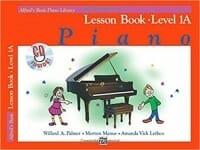
Alfred's Adult Basic All-In-One
Alfred’s Basic Adult All-in-One Course is designed for use with a piano instructor for the beginning student looking for a truly complete piano course. It is a greatly expanded version of Alfred’s Basic Adult Piano Course that will include lesson, theory, and technique in a convenient, “all-in-one” format. This comprehensive course adds such features as isometric hand exercises, finger strengthening drills, and written assignments that reinforce each lesson’s concepts. There is a smooth, logical progression between each lesson, a thorough explanation of chord theory and playing styles, and outstanding extra songs, including folk, classical, and contemporary selections.
The Brown Scale Book
This essential resource includes all major and minor scales, triads, arpeggios, dominant sevenths, and chromatic scales organized by key. A favorite for decades, The Brown Scale Book belongs in every student’s library.
The Real Vocal Book
The Real Vocal Book has many of the selections from Volumes 1 and 2 of the instrumental Real Books, but now with complete lyrics added to the pre-existing melody line. This edition features 300 essential songs arranged for low voice, including: Alfie * All of Me * Autumn Leaves * Bewitched * Bluesette * Don’t Get Around Much Anymore * Fever * Georgia on My Mind * Misty * Moon River * My Funny Valentine * Satin Doll * and more. Looking for a particular song? Check out the Real Book Songfinder here.
